Dialogue & Initiative 2012 The new annual edition of our journal of discussion and analysis is now out. More than 130 pages, it includes 13 articles related to the Occupy! movement, as well as seven others vital to study in this election year. Cost is $10 plus shipping. Or get one by becoming a sustainer. Click the title to buy it directly.
|
Lost Writings of SDS..
Revolutionary Youth the the New Working Class: The Praxis Papers, the Port Authority Statement, the RYM Documents and other Lost Writings of SDS
Edited by Carl Davidson 
Changemaker, 273pp, $22.50
For the full contents, click the link and view 'Preview' under the cover graphic.
|
|
By Randy Shannon, CCDS

"Everyone has the right to work, to free of employment, to just and favorable conditions of work and to protection against unemployment."
- United Nations Universal Declaration of Human Rights, December 10, 1948
I. Introduction
The "Great Recession" that began in 2007 has caused the greatest percent of job losses since the Great Depression of 1929. This crisis is the end of an era of unrestrained 'neo-liberal' capitalism that became public policy during the Reagan administration. The crisis marks a new level of instability with the growth of a global financial elite that targeted US workers and our trade unions after World War II.
|
|
Order Our
Full Employment Booklets
 |
...In a new and updated 2nd Edition
Capitalism may well collapse under its own excesses, but what would one propose to replace it? Margaret Thatcher's mantra was TINA...There Is No Alternative. David Schweickart's vision of "Economic Democracy" proposes a serious alternative. Even more fundamentally, it opens the door to thinking about alternatives. His may or may not turn out to be the definitive "successor system," but he is a leader in breaking out of the box. |
|
Quick Links...
CCDS Discussion |
Sex and the Automobile in the Jazz Age
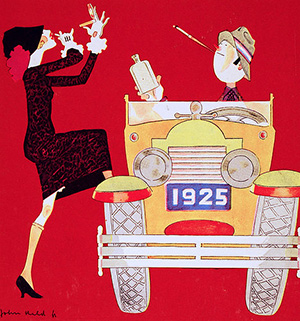
By Peter Ling in History Today: 'Brothels on wheels' thundered the moralists but Peter Ling argues the advent of mass motoring in the 1920s was only one of the changes in social and group relationships that made easier the pursuit of carnal desire.
|
 A Memoir of the 1960s by Paul KrehbielAutumn Leaf Press, $25.64 A Memoir of the 1960s by Paul KrehbielAutumn Leaf Press, $25.64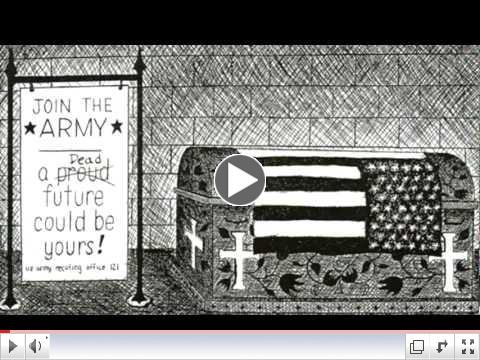 | | Shades of Justice Video: Bringing Down a President, Ending a War |
|
Carl Davidson's Latest Book:
New Paths to Socialism

Essays on Mondragon, Marx, Gramsci and the Green and Solidarity Economies |
Solidarity Economy:What It's All About

Edited by Jenna Allard, Carl Davidson and Julie Matthaei
Buy it here...
|
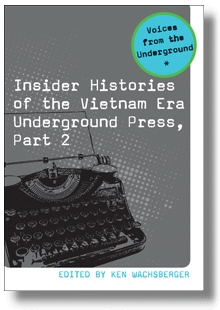
Voices from the Underground Press of the 1960s, Part 2- Foreword by Susan Brownmiller
- Preface by Ken Wachsberger
$37.50 + $6 shipping
|
|
Discussion Documents for a Militant Movement
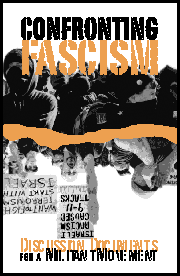
By Don Hamerquist
|
|
|
|
An Invitation to CCDSers and Friends...
 Guns, Money and Madness
We're the Committees of Correspondence for Democracy and Socialism...Do you have friends who should see this? Pass it on...Do you have a blog of your own? Others you love to read every day? Well, this is a place where you can share access to them with the rest of your comrades. Just pick your greatest hits for the week and send them to us at carld717@gmail.com!
Most of all, it's urgent that you defend voter rights, plan for 2014 races now, oppose austerity, make solidarity with the Occupy! movement and end the wars! We're doing more than ever, and have big plans. So pay your dues, make a donation and become a sustainer. Do it Now! Check the link at the bottom...
|
What's Behind America's Gun Violence?
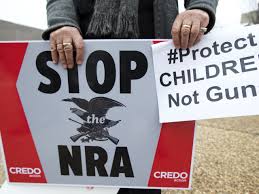 In recent decades -- despite the fact that last year there were over 11,000 murders by firearms in the U.S. and another 20,000 gun deaths from accidents and suicide -- the great majority of American politicians have been too gutless to fight for tougher laws. In recent decades -- despite the fact that last year there were over 11,000 murders by firearms in the U.S. and another 20,000 gun deaths from accidents and suicide -- the great majority of American politicians have been too gutless to fight for tougher laws.
By Jack A. Smith
The Rag Blog
Dec 20, 2012 - There is more than the act of one individual involved in the mass gun killings that take place in America -- the most recent being the massacre of 20 young children and seven school workers at the Sandy Hook Elementary School in Newtown, Conn., December 14.
The main culprit, of course, is the late killer, Adam Lanza, 20. But such events occur within a context of shared responsibility for the unparalleled number of mass and individual shooting deaths that take place in the United States every year. This includes the political system and politicians, the National Rifle Association and other gun lobbies, and federal, state and local governments. Each has played an indirect role in the latest and earlier slaughters.
Of these other responsible parties, one is our political system that refuses to strengthen absurdly deficient federal and state restrictions on the possession of various types of arms. Another is the irresponsible politicians who make it relatively easy for criminals, people with mental problems, and those who are unfit to possess weapons for other reasons to accumulate a private arsenal.
In recent decades -- despite the fact that last year there were over 11,000 murders by firearms in the U.S. and another 20,000 gun deaths from accidents and suicide, not to mention many more injuries -- the great majority of American politicians have been too gutless to fight for tougher laws.
President Obama was moved to tears in announcing the deaths of 6- and 7-year old children in Newtown, and said he might take "meaningful action" of an undefined nature. But Obama is risk averse and has shown a disinclination to tangle with the pro-gun lobbies throughout his first term -- so there's a chance all we'll get is tears and rhetoric even though 80% of the American people want gun owners to secure police permits, and nearly 90% would require background checks on all gun sales....(Click title for more)
|
|
The Inconvenient Truth About
Mental Health and Gun Control

By Kristen
A marriage and family therapist
at Rageagainsttheminivan.com
I'm still reeling from the tragedy that took place last week, trying to process the events and, like many people, wondering what can be done to prevent such a tragedy from befalling other families in our nation.
I've seen a growing conversation on the need for better access to mental health services. As a therapist, I heartily agree that mental health needs to be available to everyone, regardless of ability to pay. I want nothing more than to see our country step it up in that regard.
However.
I don't believe that better access to mental health services will solve the problem of gun violence. I'm going to do my best to illuminate the unique issues of mental health in relation to violence, and why I'm skeptical of focusing our attention on mental health instead of gun control as it relates to mass shootings.
First, I think it's important to do some research into the psychological state of the perpetrator of such crimes. To be honest, I don't love the use of the term "mentally ill" when we describe such people, because mental illness is an umbrella term that includes depression, anxiety, biploar disorder, eating disorders, and any number of other conditions that warrant treatment with a therapist or that result in a DSM diagnosis. It's much too general a term to apply to violent behavior. By that definition, because I struggle with anxiety, I would be under the "mentally ill" umbrella. And again, while I'd love to see a national shift in treatment accessibility, I don't think this is relevant to the conversation about killing sprees plaguing our nation.
I think it's important to key in on the specific mental illness that is relevant to someone who would open fire on a group of strangers. While I can't give a formal diagnosis since I've never seen any of these people in treatment, the FBI did conduct some research into the kinds of people who commit such crimes, and found that most of these mass murders are committed by criminals who fall into three groups: psychopaths, the delusionally insane, and the suicidally depressed. In most cases, perpetrators of mass crimes were not in an active psychotic state. In most cases, the perpetrator premeditated the crime, planning willfully in advance as opposed to acting impulsively. In most cases, the perpetrator was described as a loner with few friends. Most were also described as intelligent. In every case, the perpetrator exhibited a shocking lack of empathy. In diagnostic terms, we would refer to psychopaths as having Antisocial Personality Disorder, whereas those suffering from delusions might be diagnosed with Schizophrenia.
Here are some of the problems with demanding accessibility to treatment as a prevention tactic for violent crime:
Most people with Antisocial Personality Disorder or Schizophrenia do not seek treatment. In fact, not only do they not seek it out, they are usually completely resistant to it, and find ways to avoid it. The reason for this is that sociopaths are convinced that there is nothing wrong with them. They usually have a heightened sense of their own mental state. With most mental illness, the person suffering has both subjective and objective issues. For example, a person with depression experiences it subjectively ("I feel bad") and those around them experience it objectively ("You seem depressed"). With Antisocial Personality Disorder (and many of the personality disorders), that subjective experience of distress is lacking. While those around them may experience them as cold, calculating, manipulative, or cruel, the sociopath believes himself to be just fine. Similarly, people with schizophrenia may feel some disturbance, but are likely to view the disturbance as an external problem rather than something internal that requires treatment.
Antisocial Personality is a chronic, lifelong condition with a poor treatment prognosis, and Schizophrenia is a late-onset mental illness that is usually chronic as well. In the Diagnostic and Statistical Manual (DSM) that doctors and therapists refer to for diagnosis of patients, there are two categories under which mental health issues can fall. Axis I refers to most mental health issues, and includes things like depression, anxiety, bipolar disorder, and schizophrenia. Axis II refers to lifelong conditions that are considered difficult to treat. This includes mental retardation, borderline intellectual functioning, and the personality disorders (including APD). It's not to say that these people won't benefit from therapy. But with mental retardation and personality disorders, most therapists accept that you are not going to "cure" the patient or even be able to treat the condition. Rather, you will offer support and resources and behavioral interventions for people living with these conditions. I wouldn't go as far as to say that antisocial personality disorder is untreatable. But I will say that most with this disorder are unresponsive to treatment, and that many with this condition use therapy as a milieu to practice manipulation rather than as an opportunity for growth. ...(Click title for more)
|
'Did We Just Kill a Kid?':
Drone Operator Who Killed Afghan Child Can't Sleep After Waging War Miles Away

By Alex Kane
Alternet.org
Dec 17, 2012 - The human costs of the drone war the Obama administration has escalated are rarely talked about. Hundreds of civilians have been killed in Pakistan and Yemen by U.S. drone strikes. Now, a report in a German publication is shining a light on how drones are having an effect on the humans back home controlling the unmanned aerial vehicles--though the suffering of soldiers in comfortable locales pales in comparison to the suffering inflicted on civilians in Pakistan, Yemen and Afghanistan.
Der Spiegel, a leading German news magazine, has published an extensive report [3] that looks into the American soldiers operating drones. The reporter, Nicola Abe, traveled across the U.S. to profile a few of the soldiers heavily involved in operating drones. The Der Spiegel reporter focuses a lot on a soldier named Brandon Bryant, who controls drones flying over Afghanistan from the U.S.
Bryant "worked in an oblong, windowless container about the size of a trailer, where the air-conditioning was kept at 17 degrees Celsius (63 degrees Fahrenheit) and, for security reasons, the door couldn't be opened," the magazine writes [3]. It was there that Bryant carried out a drone strike responsible for the death of a child--an incident that haunted him.
After the strike landed and killed a child, one pilot said: "Did we just kill a kid?" Another responded: "Yeah, I guess that was a kid."
Bryant told Der Spiegel he completed over 6,000 hours of flight from his base in New Mexico. "I saw men, women and children die during that time," he says. "I never thought I would kill that many people. In fact, I thought I couldn't kill anyone at all."
After clocking in all those hours, the drone killings started to affect Bryant personally. The first time he hit the button to fire a missile that struck halfway around the world, Bryant said he "felt disconnected from humanity for almost a week." Now, "he can't sit in one place for very long anymore"--it makes him nervous. His girlfriend broke up with him. He's also having trouble sleeping....(Click title for more)
|
Rep. Barbara Lee Speaks Against Defense Act
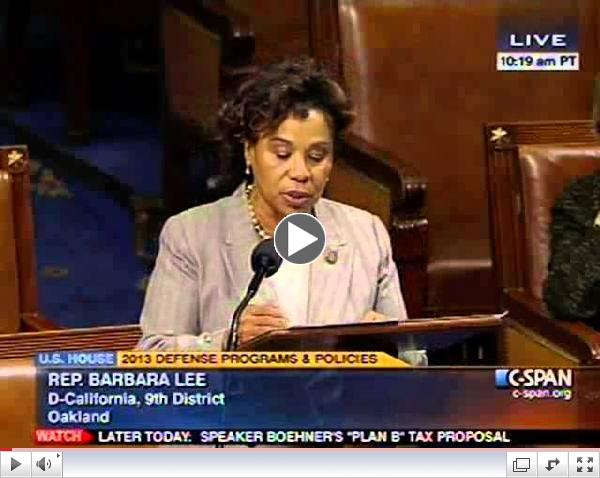 | | 2 min. vs. the National Defense Authorization Act |
|
Low-Wage Workers Hit Hardest
by Workplace Injuries, Illnesses

By Mike Hall
AFL-CIO.org
It's a double whammy for low-wage workers when they get hurt or fall ill on the job.
First, they lose pay because the vast majority (more than 80%) of low-wage workers do not have any paid sick leave to take time off to recover. Second, not only does the pay check shrink, but because of inadequate workers' compensation laws, they must shoulder a bigger portion of their health care costs with those smaller paychecks. That means workers and their communities must bear a larger share of the $39 billion (in 2010) that workplace injuries and illnesses cost the nation.
A new policy brief, "Mom's Off Work 'Cause She Got Hurt: The Economic Impact of Workplace Injuries and Illnesses in the U.S.'s Growing Low-Wage Workforce," examines the growing problem.
Using information from a study, by University of California, Davis, economist J. Paul Leigh, on the number and cost of injuries and illnesses among low-wage workers, Celeste Monforton, a professorial lecturer in environmental and occupational health at George Washington University School of Public Health and Health Services (SPHHS), and SPHHS researcher Liz Borkowski explore how workplace injuries and illnesses impact the lives of low-wage workers. Says Monforton:
Workers earning the lowest wages are the least likely to have paid sick leave, so missing work to recuperate from a work-related injury or illness often means smaller paychecks. For the millions of Americans living paycheck to paycheck, a few missed shifts can leave families struggling to pay rent and buy groceries.
Leigh's study classifies about 31 million people-22% of the U.S. workforce-in 65 occupations for which the median wage is below $11.19 per hour as low-wage workers. The janitors, housecleaners, restaurant workers and others earning that wage full-time will bring home just $22,350 per year-an amount that means a family of four must subsist at the poverty line
In 2010, 596 low-wage workers suffered fatal on-the-job injuries and 12,415 died from occupational ailments, including certain kinds of cancer. Another 1.6 million suffered from non-fatal injuries, and 87,857 developed non-fatal occupational health problems such as asthma. The costs of the 1.73 million injuries and illness amounted to $15 billion for medical care and another $24 billion for lost productivity-the cost when injured or sick workers cannot perform their jobs or daily household duties.
But as Monforton and Borkowski point out, workers' compensation insurance either does not apply or fails to cover many of these costs, which can bankrupt families living on the margin. In some cases, employers do not have to offer this kind of insurance to employees.
And even workers who do have the coverage often get an unexpected surprise after an on-the-job injury or illness: Insurers generally do not have to provide wage replacement until the worker has lost between three and seven consecutive shifts. And workers at the low end of the wage scale are often discouraged from reporting on-the-job injuries as work-related-which leaves them with no insurance benefits at all.
According to Leigh, insurers cover less than one-fourth of the costs of occupational injuries and illnesses. The rest falls on workers' families, non-workers' compensation health insurers and taxpayer-funded programs like Medicaid.
When low-wage workers miss even a few days of pay while recovering from an occupational injury or illness, the effects spread quickly," says Borkowski.
They will usually have to cut back on their spending right away, which affects the local economy. And families with children might skip meals or cut back on the heat, money-saving tactics that can put vulnerable family members such as children at risk of developmental delays and poor performance in school.
The authors call on policymakers to address this public health problem more forcefully by improving workplace safety and strengthening the safety net to reduce the negative impacts caused by the injuries and illnesses that still occur. Says Monforton:
On average, more than 4,000 workers are injured on the job each day. If we make workplaces safer, we not only stop losing billions of dollars each year, but we also could reduce the pain and suffering and financial impact on thousands of low-wage, hard-working Americans and their families.
The reports are posted here: http://defendingscience.org/low-wage-workers.
|
Endgame: Al Qaeda Grows Powerful in Syria

By Khaled Yacoub
Reuters
AMMAN, Dec. 20, 2012 (Reuters) - Having seen its star wane in Iraq, al Qaeda has staged a comeback in neighbouring Syria, posing a dilemma for the opposition fighting to remove President Bashar al-Assad and making the West balk at military backing for the revolt. A house, destroyed by an airstrike by Syrian government forces two days ago according to local residents, is seen in Azaz city December 18, 2012.
The rise of al Qaeda's affiliate in Syria, al-Nusra Front, which the United States designated a terrorist organisation last week, could usher in a long and deadly confrontation with the West, and perhaps Israel.
Inside Syria, the group is exploiting a widening sectarian rift to recruit Sunnis who saw themselves as disenfranchised by Assad's Alawite minority, an offshoot of Shi'ite Islam that dominates Syria's power and security structures.
Al-Nusra appears to have gained popularity in a country that has turned more religious as the uprising, mainly among Sunni Muslims, has been met with increasing force by authorities.
It has claimed responsibility for spectacular and deadly bombings in Damascus and Aleppo, and its fighters have joined other rebel brigades in attacks on Assad's forces.
According to Site Intelligence group, Nusra claimed responsibility in one day alone last month for 45 attacks in Damascus, Deraa, Hama and Homs provinces that reportedly killed dozens, including 60 in a single suicide bombing.
"In 18 communiqués issued on jihadist forums ... most of which contain pictures of the attacks, the al-Nusra Front claimed ambushes, assassinations, bombings and raids against Syrian security forces and 'shabbiha', pro-Bashar al-Assad thugs," Site said.
REVIVING THE CALIPHATE
Members of the group interviewed by Reuters say al-Nusra aims to revive the Islamic Caliphate, which dates back to the Prophet Mohammad's seventh century companions, forerunners of the large empire that once stretched into Europe.
That prospect alarms many in Syria, from minority Christians, Alawites and Shi'ites to traditionally conservative but tolerant Sunni Muslims who are concerned that al-Nusra would try to impose Taliban-style rule....(Click title for more)
|
New Film: American Empire vs. American Democracy
American Empire: An Act of Collective Madness
Written and directed by Patrea Patrick
Opens December 21, Quad Cinema
 | | American Empire: An Act Of Collective Madness |
Reviewed by Chuck Wilson
Village Voice
Dec 19, 2012 - "We've traded our Declaration of Independence for dependence on corporations and our Bill of Rights for corporate rights," writer-director Patrea Patrick declares in her debut documentary.
In Patrick's thesis, which she and a small band of writers restate, again and again, America is no longer a "republic" but an "empire," ruled by banks and corporations.
This takeover was no accident, Patrick alleges, but a conspiracy that can be traced to the founding of the Federal Reserve Board in 1913, an idea hatched by six bankers meeting in secret. Having established that, Patrick and company chronicle, in a haphazard time scheme, the corporate takeover of every element of American life, from health care to agriculture, as well as the continued manipulation of the financial system.
It's easy to share Patrick's outrage, particularly at the farm-killing corporatization of the America food supply, but the shrill litany of woes becomes numbing. The director appears to have filmed half a dozen talking-head interviews and filled the space around them with stock footage of the world's ills, including images of children suffering from cancer, thanks, we're told, to carcinogen-filled food. Phew! If the cabal doesn't kill us first, extremist documentaries-from the left as well as the right-surely will.
|
Protest Song of the Day:
'1913 Massacre' by Woody Guthrie
 | | Woody Guthrie - 1913 Massacre |
By Kevin Gosztola
FireDogLake
Dec. 17, 2012 - Weeks ago, to recognize the power of protest music, acknowledge its role in creating a culture of dissent and how musicians translate social issues and systemic problems into song, The Dissenter launched a daily feature to highlight a protest song every weekday. The daily feature went on hiatus while I was covering Pfc. Bradley Manning's latest hearing. Now, I would like to resume the daily feature with a particular focus on Christmas-themed protest songs.
Legendary folk singer and songwriter Woody Guthrie wrote a song called the "1913 Massacre" about a a tragedy that happened December 24, 1913, in the Italian Hall in Calumet, Michigan. Hundreds of striking copper miners and their families were in the Hall for a Christmas party when someone shouted, "Fire!" There was no fire. The people panicked and rushed toward a steep stairway, the only way the Hall could be accessed. A stampede resulted in over seventy people being killed. Fifty-nine of the dead were children.
The person alleged to have shouted, "Fire!" is thought to have been wearing a Citizen's Alliance pin. The Citizen's Alliance was funded by mine management and not surprisingly opposed the 1913 strike. So, in labor history and Guthrie's song, the person who shouts, "Fire!" is a crude prankster responsible for the massacre.
It is believed the doors could only open inward. So, when they were opened, the doors ended up smashing more people who were killed.
The song is classic storytelling. Guthrie sets the scene. We're taken to Italian Hall where a big Christmas ball is happening. There's singing and dancing. The children are dancing around the Christmas tree.
A little girl sits down to play piano. The people in the hall are paying attention to the girl and do not notice the "copper boss' thug men are milling outside." The "thugs" stick their heads in the door and one yells, "There's a fire." A lady hollers back, "There's no such a thing. Keep on with your party, there's no such a thing."
Guthrie sings:
A few people rushed and it was only a few,
"It's just the thugs and the scabs fooling you,"
A man grabbed his daughter and carried her down,
But the thugs held the door and he could not get out.
And then others followed, a hundred or more,
But most everybody remained on the floor,
The gun thugs they laughed at their murderous joke,
While the children were smothered on the stairs by the door.
In the song, seventy-three children have died. This is incorrect. In the real tragedy, as mentioned above, fifty-nine children died. Nonetheless, the essence of the song remains.
The children are carried up to to the tree while "the scabs" outside laugh. The piano plays a "slow funeral tune." The parents cry and the miners, who are on strike, moan, "See what your greed for money has done."
*
|
|
Become a CCDS member today!
 The
time is long past for 'Lone Rangers'. Being a socialist by your self is
no fun and doesn't help much. Join CCDS today--$36 regular, $48
household and $18 youth. The
time is long past for 'Lone Rangers'. Being a socialist by your self is
no fun and doesn't help much. Join CCDS today--$36 regular, $48
household and $18 youth.
Better yet, beome a sustainer at $20 per month,
and we'll send you a copy of Jack O'Dell's new book, 'Climbing Jacobs
Ladder,' drawing on the lessons of the movement in the South in the
1950s and 1960s.
Solidarity, Carl Davidson, CCDS |
|
|